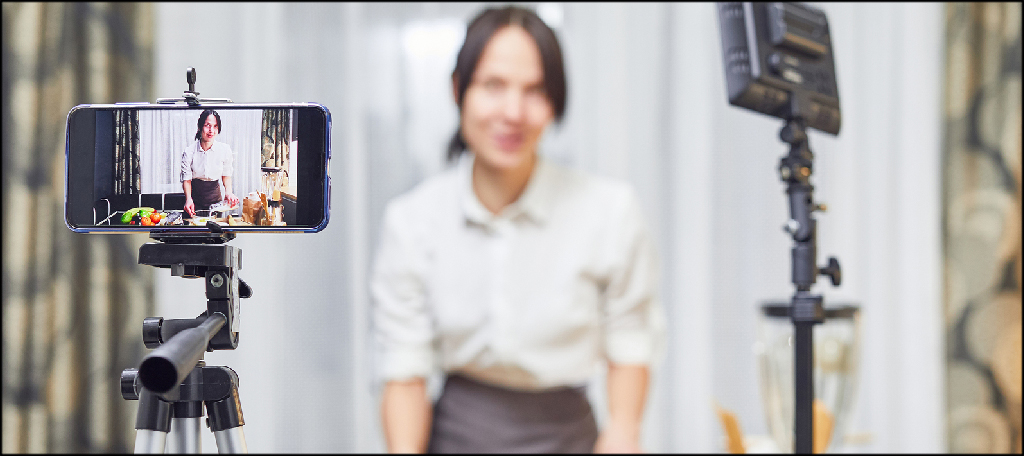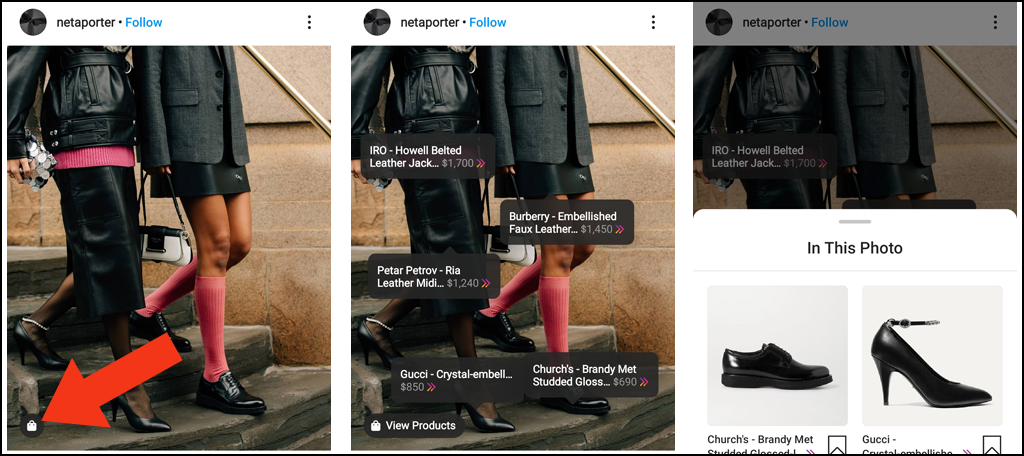This year, more than three billion people will visit a social network at least once a month. If you want to capture your share of that audience, keeping up with the latest social media trends is essential.
“But social media is nothing but memes and political arguments, isn’t it?” Well, it is that, for sure. But it’s also a vast world that extends far beyond those kinds of things. I’m assuming your business has an active presence on social media, so you already know there’s more to it.
But if you’re not convinced of its value, consider this. More than half of all social media users visit a social platform first when looking for new brands and products.
That turns a lot of traditional beliefs about social media marketing on their heads. It means that before we consult a website for product information, more than half of us consult social media. Trust is the motivating factor behind that behavior.
In a minute, we’ll talk about who people trust when it comes to social media. But whatever the cause, as a marketer, you have to adapt to the effect.
Here are 11 social media trends that will figure prominently in 2020.
1. Video

Using video in social media advertising is nothing new. What is new—what’s perpetually new—is the exponential increase in bandwidth available to most of us. That available bandwidth is why video will remain one of the most potent forms of social content you can use.
Our friends at Cisco tell us that in less than two years, 82% of all online content will be video. Think about that for a minute. It’s an almost unbelievable statistic, and it tells savvy marketers that it’s time to create better video.
The days when a video, any video, was a novelty that attracted attention on social media are over. It’s time to be more clever, more engaging, and whenever possible, more amazing.
When the majority of online content is video, your social media followers will need that little something extra that will inspire them to comment, like, and share.
Look for personalized videos to become more prominent in social media marketing. It’s video content that is customizable and relevant to a particular segment of your customers.
Facebook and Instagram already encourage brands to produce personalized video content with Story Ads. Even Twitter is on top of this trend with its offering of six-second video ads.
2. User-Generated Content
To some degree, “Influencers” are losing the public’s trust. There are a lot of reasons for that. Many influencer posts are similar or have become obvious advertisements. That perception cuts away at the foundation of what made influencer advertising effective.
Trust.
And you can add to the mix fake influencers and other influencer fraud, which is, surprisingly, a thing. It’s no surprise that big name, big money influencers are on the decline.
User-generated content like customer reviews and mentions provide a level of trust that the product is legit and desirable. Today’s customers are skeptical. They want feedback from real people before they decide to buy. And the feedback has to be genuine.
Another effective form of user-generated content is mentions and hashtags. Today’s online consumer will happily use hashtags and language suggested by brands. Pair those hashtags with customer photos and reviews, and you’ve got unimpeachable social proof.
3. Social Listening
So user-generated content is essential, but how can you find more of it?
Well, you can give Social listening a try.
In it’s most basic form, social listening is simply searching out mentions of your brand or product. Some applications and services can make your social listening much more effective.
Social listening helps you find people who are talking about your product. If that talk is positive, great. If it isn’t, social listening helps with reputation management. When you see a negative comment, address it. Fix the problem. That helps negate the criticism and builds trust.
You can also use it to check up on what’s being said about your competition. Reading the conversations and doing a bit of sentiment analysis can inform your strategy when it comes to competitors.
Taco Bell’s Twitter presence is a prime example of social listening in action. They retweet positive mentions, interact with users in a non-promotional way, and they also have a dedicated support Twitter account (more on that below).
I know what you’re thinking. Taco Bell?! What could I learn from them about social listening?” Quite a bit, actually. It’s worth noting that Fast Company ranks Taco Bell as one of the most innovative social media companies.
4. Instagram Shoppable Posts
They’ve been around since 2018, so why am I listing Shoppable Posts among social media trends of 2020? Because they are underutilized. I don’t see a lot of smaller brands exploiting the technology, and that’s likely to change.
If you don’t know what Instagram Shoppable Posts are, here’s what they look like.
- A small shopping bag icon appears in the corner of the picture.
- Clicking anywhere in the image brings up further links.
- Clicking the shopping bag icon takes you to an ordering link.

Receive orders directly from Instagram posts? Yes, please!
The reason they may be underutilized is setting it up is an involved process. Not only that, but your business also has to be approved by Instagram to get the ability to make Shoppable Posts.
You have to create a Facebook Catalog in the Facebook Business Manager and a Shop on Facebook. Then you connect your shop to your Instagram Business Account. After all that, you can activate the Shop tab on your Instagram profile.
There are apps like Linkin.bio from Later that make the actual posting of products easier. But you have to get your account(s) set up before you can use them.
5. Stories Are Still Being Told (or Shown)
Instagram Stories are one of the biggest social media trends in recent years. That trend is only going to continue. The numbers are already staggering. Half a billion people post or watch Instagram stories every day. The same number watch Facebook Stories.
That’s a lot of viewers. And perhaps the most intriguing statistic is that businesses posted a third of the most-viewed Stories. It gets even better. About 20% of Instagram Stories get a direct message from the viewer. So every day, more than 33 million potential buyers are messaging sellers because of their stories.
If there’s a better tool for your business’s social media engagement, I haven’t found it.
6. Micro-Influencers, Micro-Media, and Micro-Targeting
We talked about the decline of high-profile influencers, but that doesn’t mean social media influencers are no longer valuable. Behold the rise of the Micro-Influencer.
Micro-influencers have only a fraction of the followers that major influencers have. Usually between 5,000 and 50,000 followers. But the difference between micro-influencers and, let’s call them macro-influencers, is engagement.
Micro-influencer followers are highly active and engaged with the influencer.
Micro-influencers are seen as authorities, and their word carries more weight where their topics of expertise are concerned. So there’s more trust and a higher likelihood of a follower purchasing a product or service they endorse.
As a bonus to you, the advertiser, the cost of a micro-influencer post or mention is significantly lower than a macro-influencer. You’ll spend less and get a higher return if you can find a micro-influencer relevant to your business.
7. Niche Social Networks

This is a similar strategy to using micro-influencers. But instead of using an influencer to target a vast social network, you’re targeting smaller networks yourself.
For example, I often recommend a social network called Ello when I write website tutorials. If the website topic is creative, dealing with art, music, photography, etc., Ello is the perfect niche social network.
Its users are far more engaged than those on the major platforms. So the return on your investment of time is greater.
It’s easier to be noticed on a niche network. The audiences are smaller but more enthusiastic. You may not be able to think of any niche social networks off the top of your head. But they’re out there if you know where to look.
PRO TIP: Branded links in social media marketing are now a best practice, as they’re known to increase trust between your brand and your audience, as well as increase engagement and click-through-rate. You can create branded links using platforms like Rebrandly URL Shortener.
8. Marketing to Generation Z
Robert Capa was a combat photographer, and he coined the term “Generation X.” So we have him to blame for all the Capital-letter-named generations that followed. And here we are talking about “Generation Z” rather than using a more imaginative or descriptive term.
Thanks a lot, Robert.
Generation Z is youngsters between 13 and 22 years old. Marketing to them is different because they are the first hyper-connected generation. If you remember a time before the internet, your brain doesn’t work like Generation Z.
Like young people since the dawn of time, Generation Z wants to change the world. The difference between them and previous generations of young idealists is Generation Z has absolutely no doubt that they can change the world.
I, for one, hope they’re right. But whether they are or not, if you want to sell something to them, you have to understand them. (The first thing to understand is that they would think this conversation about selling strategies is not cool.)
As a group, and of course, in general, they are an opinionated bunch. They know what’s happening in the world, and they engage in activism when they perceive injustice. They embrace social causes like gun control, hunger, LGBTQ and other equality issues, the environment, and body positivity.
In a nutshell, if Fox News mocks it, Generation Z rocks it.
On a business level, Generation Z currently makes up about 40% of consumers. But in a mere six years, by 2026, they are expected to become the largest consumer population in the U.S. Spending more than Millennials, Generation X, and Baby Boomers.
They already spend up to three times more time shopping on social media than the average consumer. Generation Z supports brands that they believe are good for society. So your message to them should be open, transparent, and socially conscious.
9. Voice Is the Future of Search
Half of all searches are now performed using voice functions. Most of them are done without the searcher ever looking at a screen. So maybe I should have called this section, “Voice Is Search.”
The “future” part is on us. We spent years optimizing content for “web 2.0,” whatever that was. Then we spent years optimizing for mobile devices. Now, we’re tasked with optimizing for voice search.
Honestly, the best way to do that is still being worked out. It would be disingenuous to say, “Here are five things that will make you the ruler of voice search.” And to make matters murkier, as language recognition improves voice search changes.
But there are some things you can do. They involve thinking about keywords differently. Voice search will often include more long-tail keywords than a written search. You want to structure your SEO around more conversational keywords. Think about how people ask questions when they’re speaking rather than typing.
That approach flies in the face of a lot of traditional SEO thinking. But if you can adjust, you’ll have an advantage when it comes to voice search.
10. Customer Service and Support

Social media networks have the potential to be an incredible customer service channel for your business. I mentioned Taco Bell earlier, and all you have to do is look at the Taco Bell dedicated support Twitter feed to see social media customer service in action.
They reply to customer complaints, and their actions show that they value customers’ opinions.
I assume humans do most of the interaction on that Taco Bell account. But the number one way to improve your social media customer service is by using chatbots.
Speaking of flying in the face of a lot of traditional thinking, it wasn’t long ago that chatbots were something to be avoided. But all that changed very rapidly, and now people want to interact with chatbots.
Advancements in AI technology have made chatbots smarter. When you pit them against humans, they’re faster and often more effective. And, of course, they’re always available. And here’s an eye-opening statistic: 90% of businesses report that complaints are resolved more quickly with chatbots than with humans.
If you don’t trust the business reports, check this out: 56% of actual humans would rather talk to a bot than call customer service. Considering some of the run-ins I’ve had with telephone support over the past few years, I’m not surprised.
Though, I’m not sure what it says about us as a society that it’s easier to train a robot than a person.
But the acceptance of chatbots is welcome news to a lot of companies, large and small. Just make sure you don’t launch a chat feature using an undertrained or outdated bot. This is one of the areas where you want to be using the latest technology even if the investment is a bit steeper.
11. Dynamic Landing Pages
Much of what we’ve talked about here involves getting people to your website to buy goods. But it shouldn’t stop there. Visitors are increasingly expecting personalization when they get to your site.
That’s where dynamic landing pages come in.
The more you can personalize the page, the better. It’s relatively easy to get location data, which is why you see that used so frequently.
A great personalized landing page needs more than a location that’s correct most of the time. Several dedicated services can create dynamic landing pages based on your input or data. Unbounce, HubSpot, GetResponse, SendinBlue, Leadpages, Instapage, Wishpond, Lander, and Landingi, among others.
Then there are dynamic page builders that you can integrate into your existing website infrastructure or workflow. Divi, MailChimp, Launchaco, Carrd, Elementor, Launchrock, Ucraft, KickoffLabs, Shortstack, and Themify are a few worth taking a look at.
Whatever method you use, you should strive to create different landing pages for each social campaign. And beyond that, reflecting as much personal information as you can gather back to the visitor.
That approach has time and resource costs, but when it’s done right, the benefits can outweigh the costs.
12: Google+
Just kidding.
Of course, Google+ was put to rest a little more than a year ago. But I bring it up because it’s unusual for high-profile, highly-used social networks to die. The last significant social app to close was Vine, and that was almost five years ago.
So when your friends or colleagues tell you, “[Whatever] is dead, don’t bother with it,” don’t listen to them. Every person or business has a different relationship with every social platform. Something that is “dead” to one group can be vital and useful to another.
As long as you can engage with your audience or customers, the platform is viable and alive. Popularity comes and goes, but as we’ve discussed, popularity doesn’t always determine which social network is best for you.
The Future of Social Media for 2020
Luckily, the future of social media that we’re talking about here is more about adapting than starting fresh. It’s mainly about changing your approach to existing platforms. That can also be an opportunity to take a closer look at what’s been working for you and what hasn’t.
With more and more people undertaking a “digital detox” where social media is concerned, a fresh look is critical. Many people are beginning to feel overwhelmed and overloaded by social media. They realize that, in unhealthy doses, it can affect their well being and mental health.
Others are pulling away because they have lost trust in social platforms. Whether it’s privacy concerns, fake news, fake influencers, or something else altogether, an increasing number of people are reevaluating how much time they spend on social media.
One study showed that more than a third of adults have cut back on social media use. When you consider numbers like those, your messaging has to be better than ever to land in the proper spot.
So take a look at the trends we’ve talked about today and see where you can sharpen, or where you can more precisely target the message. Key in on customers (and potential customers) and make your social media accounts work for you.


I just came across your blog post and must say that it’s a great piece of information that you have shared. Great article with very helpful information!
Thank you. We try to bring the best we can with every piece. And social media plays such an integral part in society today, that you’d want to take every advantage you can to succeed.